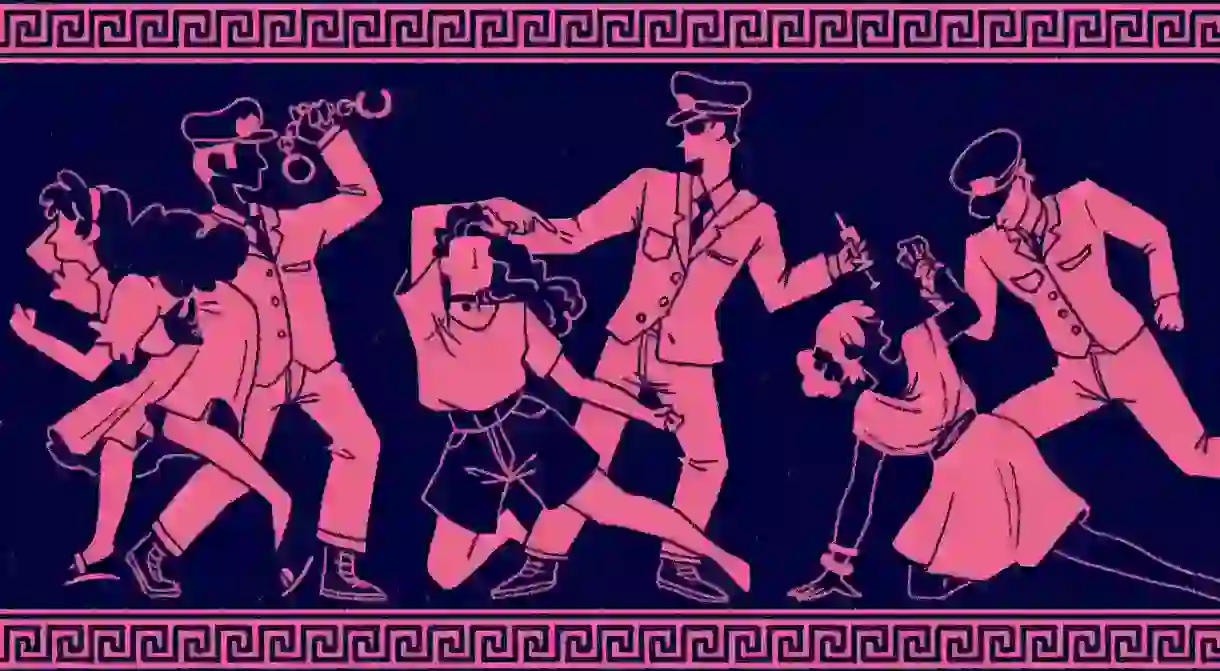The Complex Symbolism of Pink in Athens' Metaxourgeio Area

Culture Trip explores the complex symbolism of the colour pink in Athens’s Metaxourgeio area.
To discover the many splendours of Greece, from history-rich archeological sites, to sandy beaches beside a glistening turquoise sea, join Culture Trip’s curated 8-day trip from Athens to Santorini.
The Metaxourgeio neighbourhood has a mixed sense of creativity, dynamism, poverty and chaos. It is a vibrant area in the midst of transformation, with many community-focussed efforts from skate bowls to some of the best restaurants in Athens, but this neighbourhood also has a troubled history.
The area is Athens’ more active red light district, where the colour pink is used to denote functioning brothels. Yet the light, feminine and cheerful hue that it brings to the buildings, belies darker and more complex connotations associated with the area’s past.
In Greece, sex work carried out in registered brothels is legal. The women who work there have to have health checks every few weeks. But while the spaces are regulated by the government, those who work there are not protected by labour laws. Within a supposedly safe environment, there is already space for mistreatment and injustice.
At the start of the economic crisis in Greece, it was reported in a study by EKKE (Greek Centre for Social Sciences) and the Institute of Criminology at Panteion University, that prostitution had increased by 150 percent in just two years. At the time, articles in the local and international media reported on stories of women driven by desperation to work on the streets. However, not all women worked through registered brothels at that point, nor do they now. As such, the women found themselves even more vulnerable to brutality.
Before the general election in 2012, Athens witnessed a persecution of women in the local area. Police targeted groups of women that they perceived to be sex workers (though in reality very few women were) and force-tested these individuals for HIV. This was considered by many to be a political manoeuvre led by the department of health; a ruse designed to ‘clean up’ the centre of Athens in the run up to the election.

Such targeted action had serious ramifications for the victims involved. Women who tested positive for HIV were then imprisoned on the charge of grievous bodily harm. These troubling events which unfolded during the course of 2012 are the subject of Ruins, a documentary by Greek filmmaker Ζoe Mavroudi.
Worse was to come as the Greek news cycle cynically reported on the story of these women, naming and visually identifying the individuals on national television. The effect of such public shaming arguably betrayed the concerning capacity of the state to engage in the act of ‘othering’, specifically targeting vulnerable minorities for political gain. As Ruins highlights, the events also demonstrated a lack of education about HIV in Greece.
And while the memory of events in 2012 may have faded from public memory, the feeling of trauma is still felt amongst this disenfranchised community of women. As such, the pink of the local area may symbolise something beyond a practical denotation. It encompasses the vulnerability and precariousness of the position that many women find themselves in.
Eager to learn more about the history of Athens? Check out our guide to a history of Athens in 11 buildings, must-see historical sites in Athens and the real story behind how Athens got its name.













